"Mercedes Took the Express Elevator up to Sid's Rarefied World"
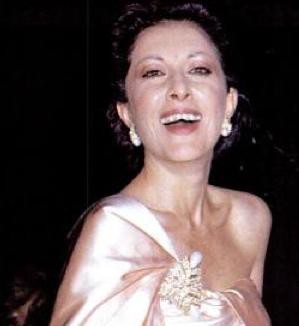
The New York Post account of the Sid and Mercedes Bass divorce is PHENOMENAL. So well done! It’s the greatest thing ever, ever, EVER. Don’t miss the part where the young Mercedes Tavacoli Diba Kellogg Bass is described by rich person chronicler Charlotte Hays this way: “When she met the ambassador, she was heavier than she is now, and, of course, she’s no great beauty. But she was the ultimate geisha.” AND: “And so nine weeks after Mercedes, then 41, lobbed that fateful piece of bread, she called her husband, Ambassador Francis Kellogg, from her five-star Parisian hotel suite. ‘Goodbye, darling,’ she said. ‘I’m marrying Sid.’” OH YES. “On Dec. 10, 1988 — after Sid divorced his first wife, society queen Anne, settling with her for somewhere between $200 million and $500 million — the couple married in a $500,000 gala at New York’s Plaza hotel.” WAIT, AND THIS, from her married life with Sid: “There were originally four houses on the Texas property; the couple combined two of them, and Mercedes had a third, which she deemed unsightly, picked up and sent across town to serve as a home for single mothers.” Here, for your informed reference, is New York magazine’s Oct 20, 1986 piece: “Sid Bass and Mercedes Kellogg Stun Society.” Society! Stunned! The Dinner Roll Shot Heard Around the World (of the Upper East Side)! Still delicious!
Baby Bears!!!
“The little grizzly bears bopped each other over the head and even tried to bite one another with their tiny teeth as they practised their fighting skills.” THERE ARE PHOTOS.
Martin Luther King Jr.'s Lessons For Occupy D.C.
by Suzannah Evans
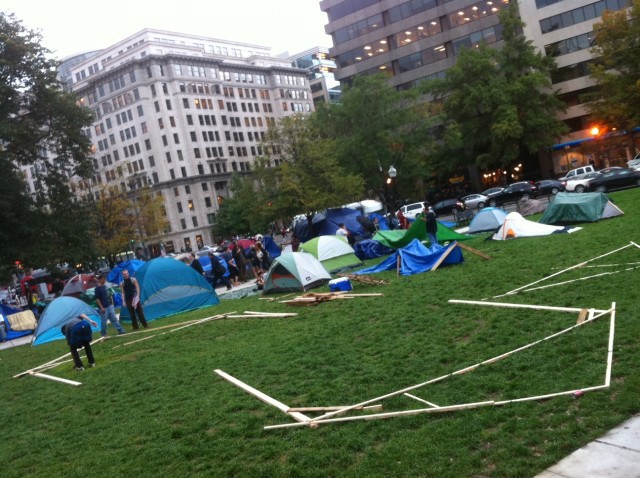
As per the Washington standard, at the center of McPherson Square, just four blocks from the White House, is a bronze equestrian statue of a Union general who was killed in the battle for Atlanta. On Thursday and Friday, Occupy D.C. was contained to the quadrant northwest of the statue, with a pop-up city of a couple dozen tents and propped-up tarps on one grassy strip, facing a disorganized but useful-looking canteen and information booth.
The first impression, to be honest, is that Occupy D.C. is small. Quite small, compared to the throngs in New York’s Zuccotti Park, Boston’s Dewey Square or Chicago’s Grant Park, with about 100 people milling about the square during the day on Friday. As a Washingtonian for the last four years, I can tell you that protests on the current scale of Occupy D.C. happen at least once a week. Tibetan freedom, South Sudanese independence, anti-Iraq War, pro-Ron Paul; pick your issue, someone’s marching about it in Washington.
The difference, of course, is that the other protesters tend to fold their placards and go home after a few hours.
The modest scale of Occupy D.C. feeds my skepticism about whether this iteration of the 99 Percent movement is capable of mustering the kind of energy seen in New York and other places. Washington is an industry town. The federal government employs a third of the population in the District and its Virginia and Maryland suburbs. Government employees, and the private contractors who feed off Uncle Sam, are not natural rebels.
Even those of us in the nonprofit hub of Dupont Circle are more inclined to try to change the machine from the inside out, with patient lobbying and cajoling. When was the last time you heard of Greenpeace, even, which has its U.S. headquarters nearby in Chinatown, exercising civil disobedience in Washington?
But Occupy D.C. does have one important historical precedent. Yesterday, President Obama finally dedicated the Martin Luther King Jr. Memorial. King’s legacy of peaceful resistance is present at all the Occupy protests, but D.C.ers should take his last, often-overlooked campaign as a model and cautionary tale for their own ambitions.
In 1968, shortly before his death, Martin Luther King Jr. launched the Poor People’s Campaign. The most visible aspect was a shantytown constructed in West Potomac Park by the Lincoln Memorial, known as Resurrection City. The plywood-and-plastic shacks went up a month after King was killed, and remained there, with as many as 2,600 people over 15 acres, for six weeks.
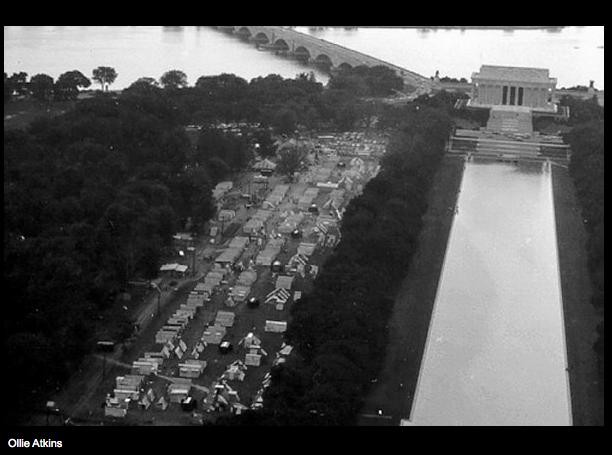
The population of Resurrection City was about two-thirds black, mostly poor young adults, with a contingent of college-educated white men from other cities who volunteered to run the administration. Just as Occupy D.C. has a working kitchen cobbled together with donated electronics, Resurrection City had a city hall, a dining mess, a psychiatrist’s office and the Coretta Scott King Daycare Center. The Rev. Jesse Jackson was its mayor.
Resurrection City was a place where poor African Americans, along with Native Americans and sympathetic white people, quietly made their situation impossible to ignore. Washington was always a city plagued by black poverty, but it was easy to overlook ever since a slum that had been within eyesight of the Capitol dome had been destroyed in the 1950s. On West Potomac Park, within a stroll of the Reflecting Pool and the spot where King gave his “I Have A Dream” speech, poor Americans were no longer invisible.
But the shantytown was marred by outbreaks of violence, and D.C. (once considered a riot-proof city, surrounded as it was by military strongholds) was still jittery from the riots that had ravaged several neighborhoods after King’s death.
And so at dawn on June 24, 1968, hours after Resurrection City’s permit expired, a thousand Park Police in flak jackets surrounded the park. According to reports in the Washington Post, 250 policemen went into the shantytown and detonated a thousand tear gas grenades. But all they found was a group of about 100 people outside the makeshift city hall, singing freedom songs. The rest of the protestors, fearing confrontation, had fled in the night. By the end of the next day, the city had been razed to the ground.
But one of Occupy D.C.’s biggest challenges is that this isn’t 1968. Buoyed by the federal government, Washington and its suburbs have one of the nation’s healthiest economies. It took forty years, but the capital city has finally emerged from the legacy of the King assassination riots. At 14th and U St. NW, then considered D.C.’s Harlem as the black cultural center of the city, teenagers once shouted “Beep beep, black power, beep beep, black power,” before starting the worst of the riots on the night of King’s death. In December 2009, the intersection was the site of a different chant: mostly white young people throwing snowballs and calling, “You don’t bring a gun to a snowball fight!” when a plainclothes officer, whose car got pelted by a snowball, brandished a weapon.
I wondered if D.C. still has enough revolutionary spirit to drive the Occupy movement to the impossible-to-ignore phase of Resurrection City, which, even after King’s death, kept pressing his message of economic equality. That was what brought me to McPherson Square late last week.
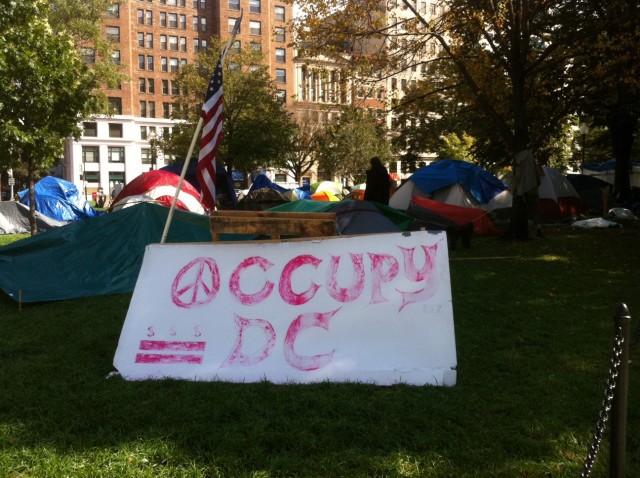
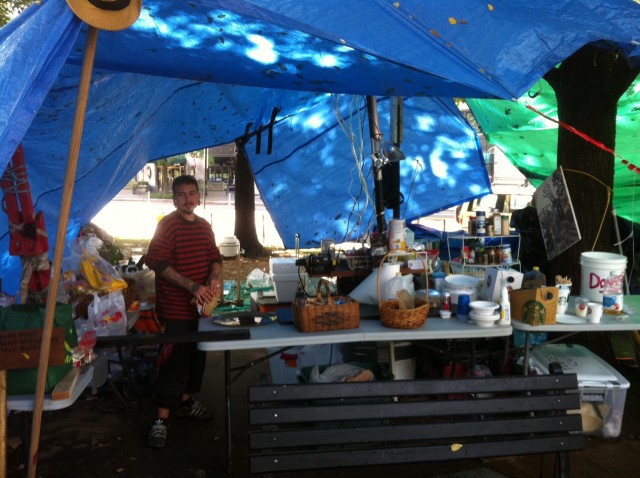
On Friday, I chatted with J.C., a self-described Jewish socialist who was manning the kitchen. An unemployed social worker, born and raised in the D.C. area, J.C. came to Occupy D.C. because, he said, “It just seemed right.”
“This town has a lot of potential,” he said after he arranged donated Clif bars. “You’ve got the richest of the rich living next to the poorest of the poor. I don’t know why there wouldn’t be more uprising here.”
I spoke with a couple dozen residents at Occupy D.C. over two days, and to my surprise, more than I expected were actually from the D.C. area, like J.C. By its nature, of course, the occupation is in flux; a goodly percentage of people are travelers gypsying from one protest to another. On Friday, my casual census of protestors was probably skewed because many had left to be present at Mayor Bloomberg’s threatened early-morning cleanup at Zuccotti Park.
But on the previous evening, at least a hundred people crammed under the concrete awning of the McPherson Square metro station for the day’s general assembly as a storm crashed in. The crowd was fully integrated by any measure except age; it was uniformly young. It reminded me of the crowd at Obama’s last rally in a Virginia suburb the night before the 2008 election. They were the faces of the promised change from those heady days. It was a crowd that would please Dr. King, even though his Poor People’s Campaign ultimately ended without meeting its goal of major legislation to promote jobs and affordable housing. It was a crowd that said not to write off Occupy D.C. just yet.

Suzannah Evans is a writer and editor in Washington, D.C. She enjoyed using the microfilm reader at the Martin Luther King Jr. Memorial Library’s Washingtoniana Division while researching this article.
Aerial photo of Resurrection City courtesy of the Ollie Atkins Photograph Collection, Special Collections & Archives, George Mason University.
Peter Kaplan on Jill Abramson
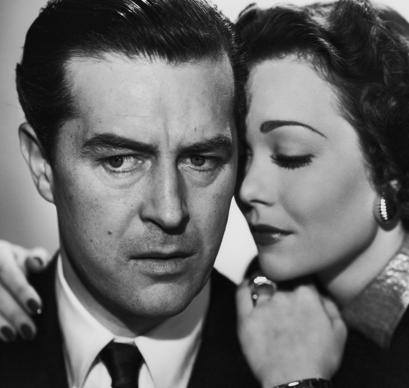
“Jill always had a swagger. It was as if she were in a romantic comedy. She had the same feeling that Rosalind conveys in ‘As You Like It.’ In the last act, everything would work out. She wasn’t like the other girls at Harvard. Most of my crowd were either wonks or tough feminists who would chew your balls off. But Jill was the witty cosmopolitan who gave running commentary that was like a voice-over narration from a Billy Wilder movie.”
— Fairchild fashion group honcho Peter Kaplan assesses New York Times executive editor Jill Abramson
in today’s New Yorker.
What Heaven Is Now
“I think basically becoming famous has taken the place of going to heaven in modern society, hasn’t it? That’s the place where your dreams will come true. It’s an act of faith now; they think that’s going to sort things out.”
— Jarvis Cocker, correct as usual.
Real Penguin Just Like The Penguin From Batman
The BBC nature series Frozen Planet starts next week on the 26th. It will of course be amazing. Watch this sneaky penguin steal his neighbors rocks!
Stone Roses Reunion Good News for Old People
Are you excited about the possibility of a Stone Roses reunion? Well, happy 40th birthday to you, then!
The Global Warming Diet
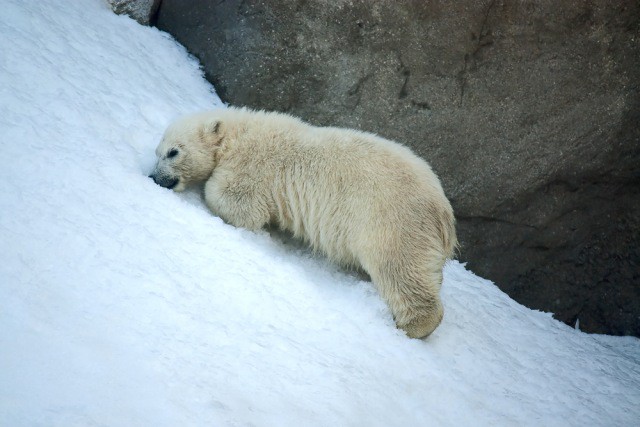
Slimming! “Polar bears are shrinking because of the impact of climate change on their natural habitats, along with many other animals and plants, researchers say. Rising global temperatures and changes in weather patterns have knock-on effects which are already stunting the growth of a wide range of species. The change could have a major impact on the expanding human population, with major food sources like fish likely to reduce in size and crops expected to grow smaller and less reliably than today.”
Photo by zhannaprokopeva, via Shutterstock
